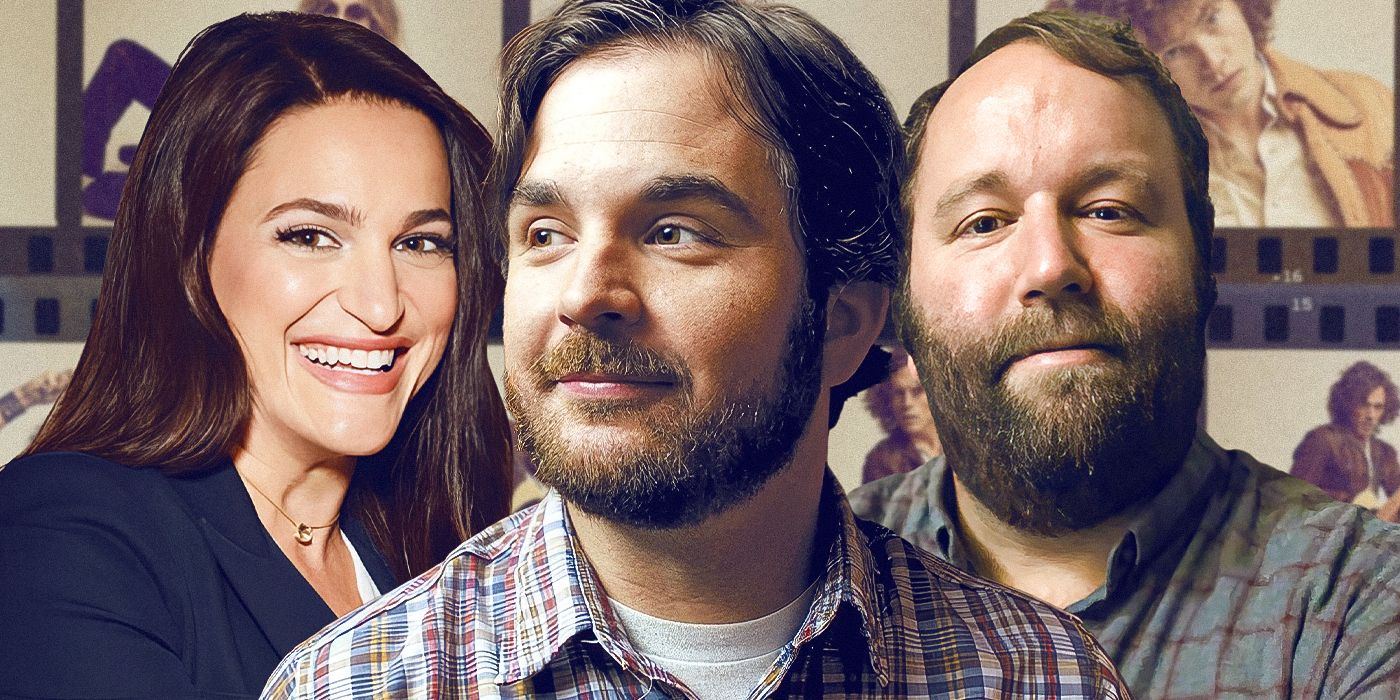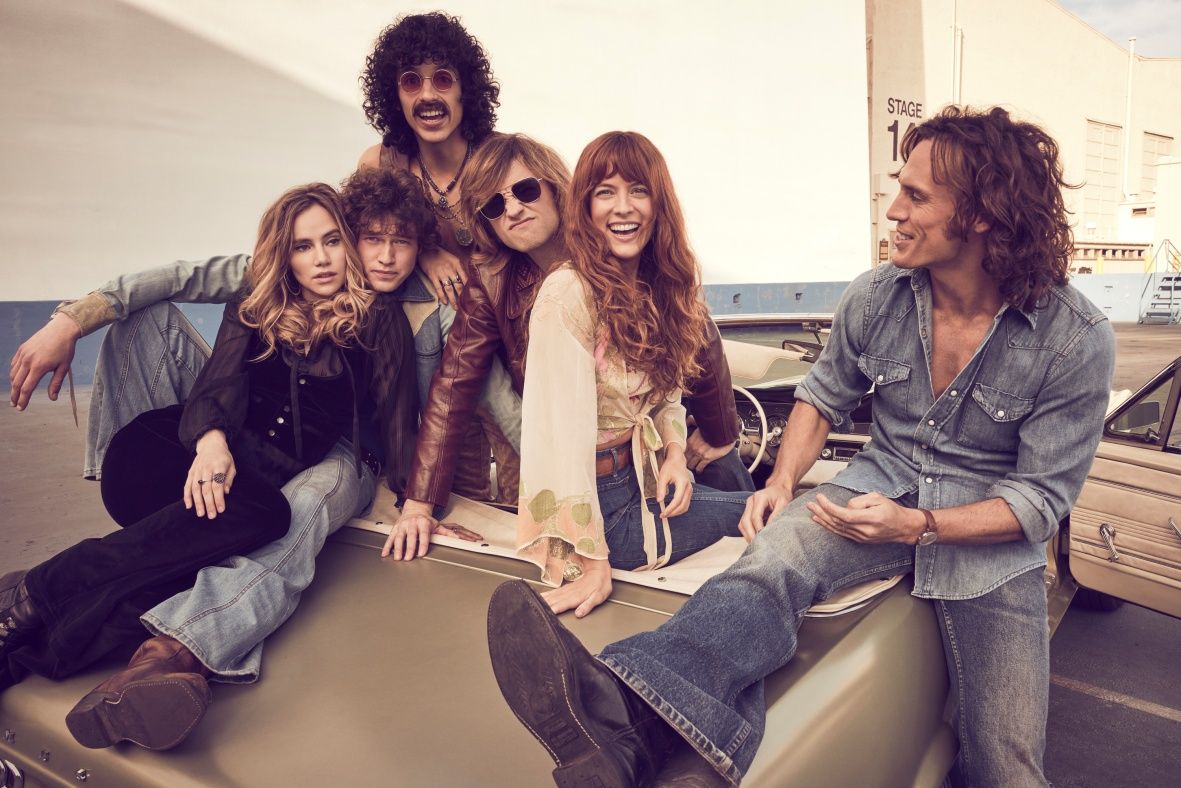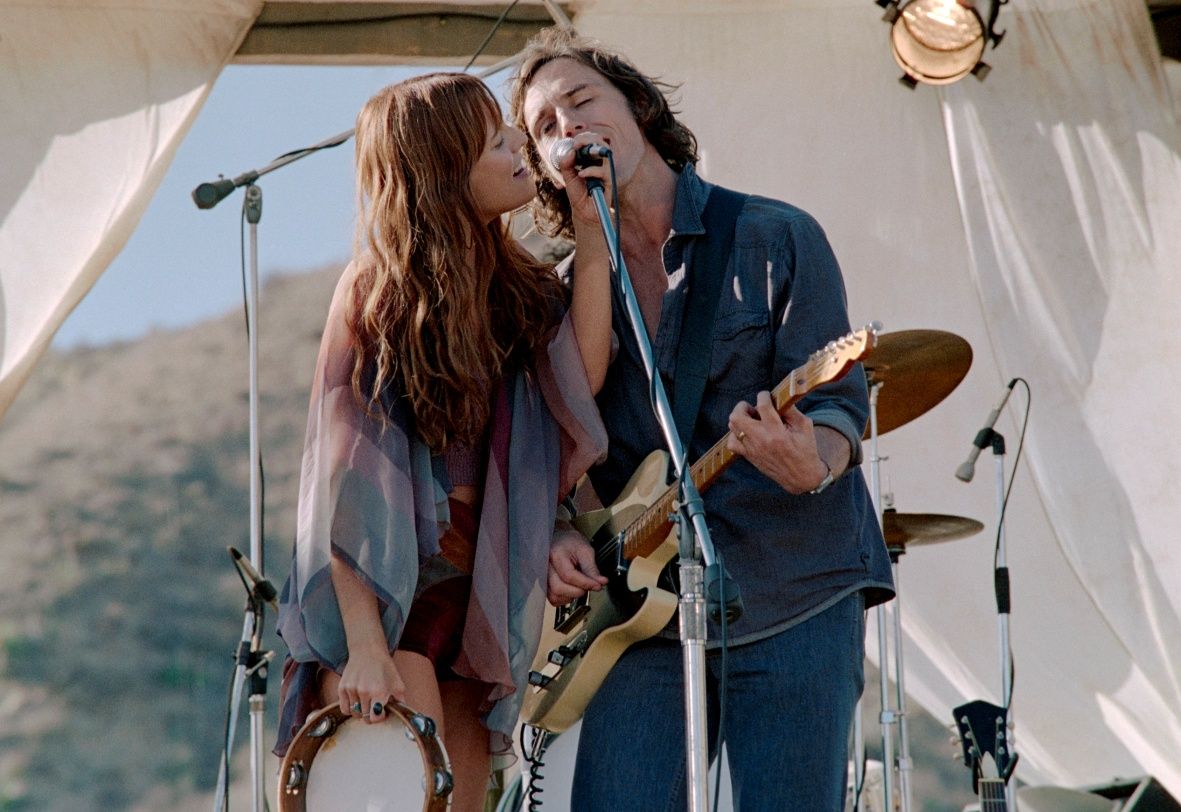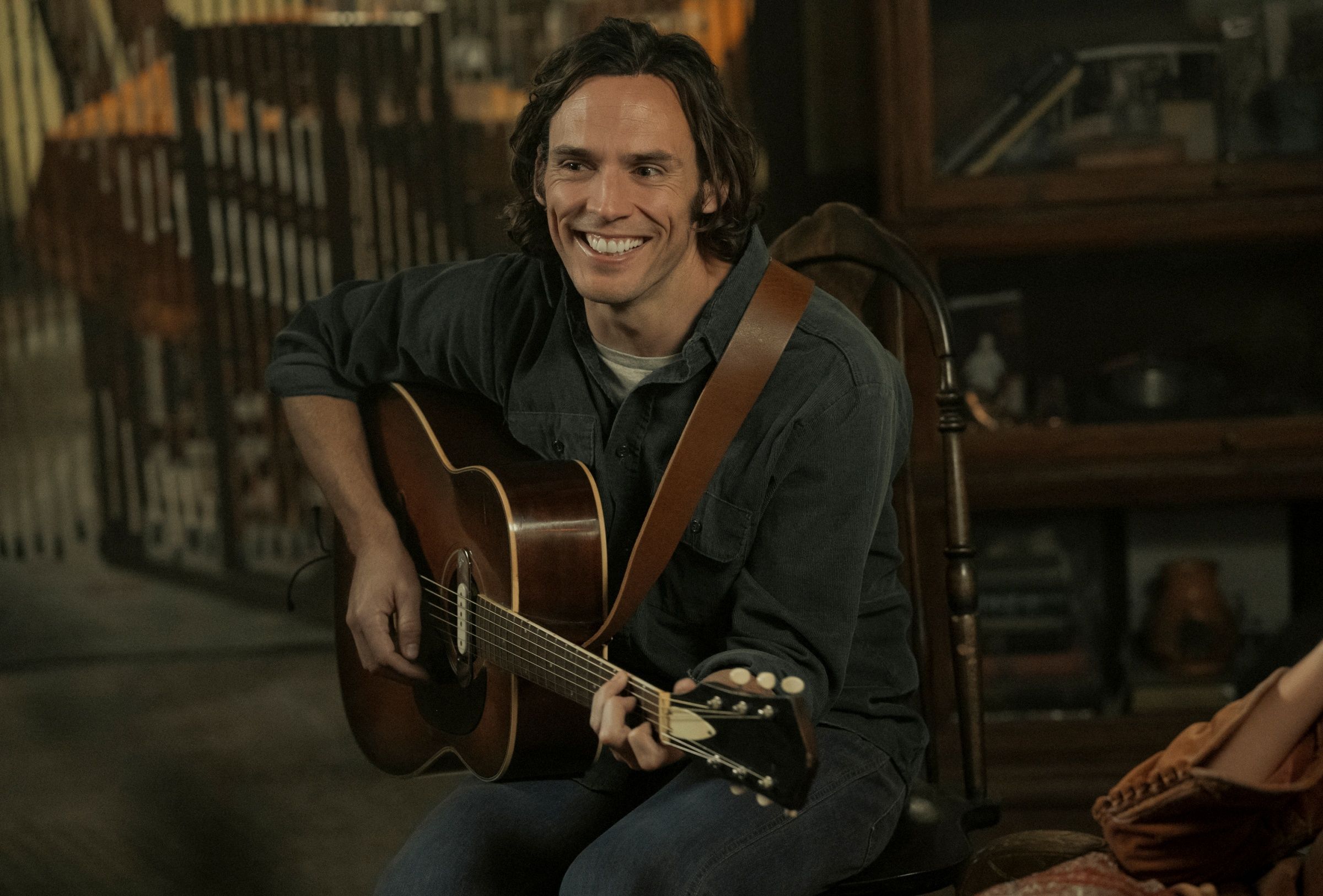Based on the best-selling novel of the same name from Taylor Jenkins Reid, the Amazon Studios/Hello Sunshine series Daisy Jones & The Six tells the story of the meteoric rise and crash-and-burn implosion of the iconic 1970s band, fronted by Daisy Jones (Riley Keough) and Billy Dunne (Sam Claflin). The two charismatic singers are brought together to explore their shared love of music, but while their combined artistry is magic, their personalities clash, becoming toxic for everyone around them and eventually tearing them apart. As their story is recounted directly by the band, through their personal truths and the songs that defined them, you’ll learn how desire and determination, and fame and success, can’t always overcome it all.
During this interview with Collider, executive producer Lauren Neustadter, showrunner Will Graham and director James Ponsoldt talked about why they wanted to be a part of adapting this story, making a legitimately great album of original songs as a companion to the series, the fun of living in this world for the length of the shoot, getting the vibe right, shooting the Soldier Field concert, and the biggest stand-out moments for them.
Collider: Lauren, it sounds like you’re the one responsible for getting the ball rolling with this adaptation, once this manuscript was brought to you. Did you have any idea what you’d be in for, when you read it?
LAUREN NEUSTADTER: Well, the person who really got the ball rolling was (husband) Scott Neustadter, my better and smarter half. I was very lucky that he started it. Because Scott is a huge music fan, the conversation usually shifts into the direction of music, and years before, he and Reese [Witherspoon] had a conversation about seventies music, Fleetwood Mac, and Stevie Nicks. So, he was like, “Reese is gonna lose her mind for this book.” So, I got the book and started reading it, and I will say, I really did know exactly what it was gonna become. When you read this book, you feel the epic scale of it, but also the incredible emotion and the depth of each of these characters, in these complex relationships. As I was reading it, it was so clear that this is a television series, and that these are chapters that are unfolding in such an unbelievably dramatic fashion. It just felt very ripe for adaptation. So, we were incredibly passionate about getting it and were very lucky that we did.
When you’re at that stage where you read something and you’re like, “Okay, I see this, this is a show,” is your first reaction, “Great, here’s a new project for us,” or do you go, “Oh, my God, look at all these things that I’m gonna have to figure out”?
NEUSTADTER: It’s, “Oh, great, this is a new project, We have to win it.” When there’s something that’s as exceptional as this, you’re not the only person that read it, and you’re not the only person that wants it. It then becomes, “Oh, my goodness, we need to mobilize and we need to make sure that we’re the ones that have the privilege of adapting this.” We were very lucky on this one that we did.
Will, I absolutely loved A League of Their Own, which also brought a group of individuals together and explored complicated love stories while being set in another era. Daisy Jones & The Six has all of that, but it also has songs and live performances, and you have to weave in this docu-style format. What was it about this that made you want to tackle all of that?
WILL GRAHAM: It’s the same thing that every person who worked on this project responded to when they first read the book. We were all like, “Oh, God, think about what we’re gonna get to do.” It’s so exciting because we’ve never seen it on TV before, and it’s also scary because we have to make an album that, in the show, we’re gonna say stands with the best albums of this period. Thank you for saying that you enjoyed League. I love writing about people who care about something more than they care about themselves, and people who are in love with something bigger, and that was so clearly true in this story. Daisy and Billy, and Karen and Graham, find each other through the music, but also don’t quite know what they’re supposed to be with each other. That’s what made me want to do it. Also, just the chance to step into this world, we got to be flies on the wall at Sound City, the greatest studio in the history of music, where Nirvana and Fleetwood Mac recorded, and watched the creation of this album that we’re incredibly proud of. It was the experience of a lifetime.
James, what did you want to set up and establish with the episodes that you directed? Especially directing the first one, how did you want to set everything up, so that it could be carried through after that?
JAMES PONSOLDT: A lot of it was the vibe. The pleasure of reading the book, for all fo the fans, which I include myself in that group, is that there’s a level of wish fulfillment. Everyone has a favorite song that they want to be their wedding song or their funeral song, or whatever it is. We had to understand what would go into that, what the musicians would be thinking and feeling, and what they’d be hoping it would be and what it would become. And then, we got to translate that, in making this show. There’s a level of wish fulfillment and romanticism that was aspirational in a way. We all live in L.A. We got to shoot in our favorite places. We got to shut down the Sunset Strip. That was the first time that’s happened since The Doors shot there. We shot at The Whiskey, we shot at The Troubadour, and we shot at The Riot House. And then, for fans of music, of this city, and of anybody who’s ever come together with friends to create something and to create a chosen family, we got to make something that translated that vibe into everything in the show.
NEUSTADTER: I will also say that Jess Kender, our production designer, did the most amazing job transforming these places into exactly what they were in the seventies. She and her team did so much research and they worked so hard. When we shut down the Sunset Strip, it was an incredible transformation, and Sound City, as well. We all knew Sound City and had spent so much time there, over the years that we were working on the music, but then when we walked in and saw what she and her team had done to bring it back to exactly how it was in the seventies, I definitely cried.
GRAHAM: Yeah, I cried, too. And it’s worth saying that, between Jess and Denise Wingate, who is our incredible costume designer, we would walk on set every day and say, “Wow, they’ve realized a world that has more depth and more authenticity and more warmth than what we could have imagined.” We’re so grateful.
PONSOLDT: They built a time machine and let us walk into it. It was pretty awesome.
GRAHAM: It was a good time to escape from the present.
NEUSTADTER: And I think it still is. I hope one of the things that the audience will really savor about the show is that we welcome you into this world, and we bring you up close and personal with these characters that you’ll get to know. We want the audience to get carried away by the music, but also by the complexity of these relationships. That was always our goal, and it’s something that’s quite delicious and a lovely escape from reality.
Because you guys did this as fans of the story and the characters, what was the moment that each of you had, where you were like, “Okay, this is everything that I wanted it to be”?
NEUSTADTER: I will say Soldier Field. We shot that in New Orleans. We took over Tad Gormley Stadium, and Jess and her team turned it into Soldier Field. And with Denise, it was the pinnacle of wardrobe excellence. It just felt like everything came together. They performed all of the songs and it was huge. We shot it over five nights. As soon as the sun went down, we started shooting, and when the sun came up, we wrapped.
GRAHAM: And we all lost our minds, by the end of it.
NEUSTADTER: I actually loved it. I’m so sentimental. I was like, “These are the best days of our lives.” I just thought it was so unbelievable. It was the culmination of everyone’s hard work. The crew had become a family. The cast had become a family. It just felt like such a big and unique moment, both in the show and, really, in all of our lives.
GRAHAM: For me, the sequence that we shot, which is the last 20 minutes of the third episode, where Daisy and Billy meet for the first time, I wrote the episode with an incredible writer, named Nora Kirkpatrick, who was actually a member of Edward Sharpe and the Magnetic Zeros, where she played the accordion. She brought this sense of what it’s like to step into the studio with someone that you don’t know and try to make something happen. Watching those moments and watching Sam [Claflin] and Riley [Keough] watch each other, you’re all hoping that chemistry is gonna happen between them, and it did. That was incredibly exciting.
PONSOLDT: That was an incredible moment for me because so much of that was what the story’s about. It’s about people who are the main character of their own story, lead singers, having to learn to listen and harmonize, which is a real gut check for some people. I also thought the Diamond Head sequence, shooting in what was a Hawaiian volcanic crater that was recreated by our amazing production designer in Simi Valley, was gonna the apex for me. It was incredible. Checco Varese, our fantastic cinematographer, made it look massive. And then, the thing that really moved me was episode five, when the band really learns to play together. We actually get brought, as the audience, into the actual songwriting process, from soup to nuts. There’s no song at the beginning of it, but by the end, you’re hearing them really play something, and it’s one of my favorite songs.
GRAHAM: This show was truly globe-hopping and enormous. Ending the shoot, shooting in Greece on the island that Leonard Cohen lived on and Joni Mitchell visited, really famously, in the seventies, had an incredible scope to it. There were just so many moments where we were all pinching ourselves that we were getting to do this.
NEUSTADTER: With “Let Me Down Easy,” we had the privilege of getting to sit in on the songwriting session between Blake Mills and Z Berg. He allowed us to be a fly on the wall, and also Riley and Sam. Scott, who wrote the episode, was listening to every word that they were saying, and so much of what actually happened in that room was infused into the episode. It’s such an authentic rendering of what it is for two people to compromise to create, and then bringing the rest of the band in. The way that James and Checco shot it, and the camera movements around the studio, it just felt quite magical.
Daisy Jones & The Six is available to stream at Prime Video.




